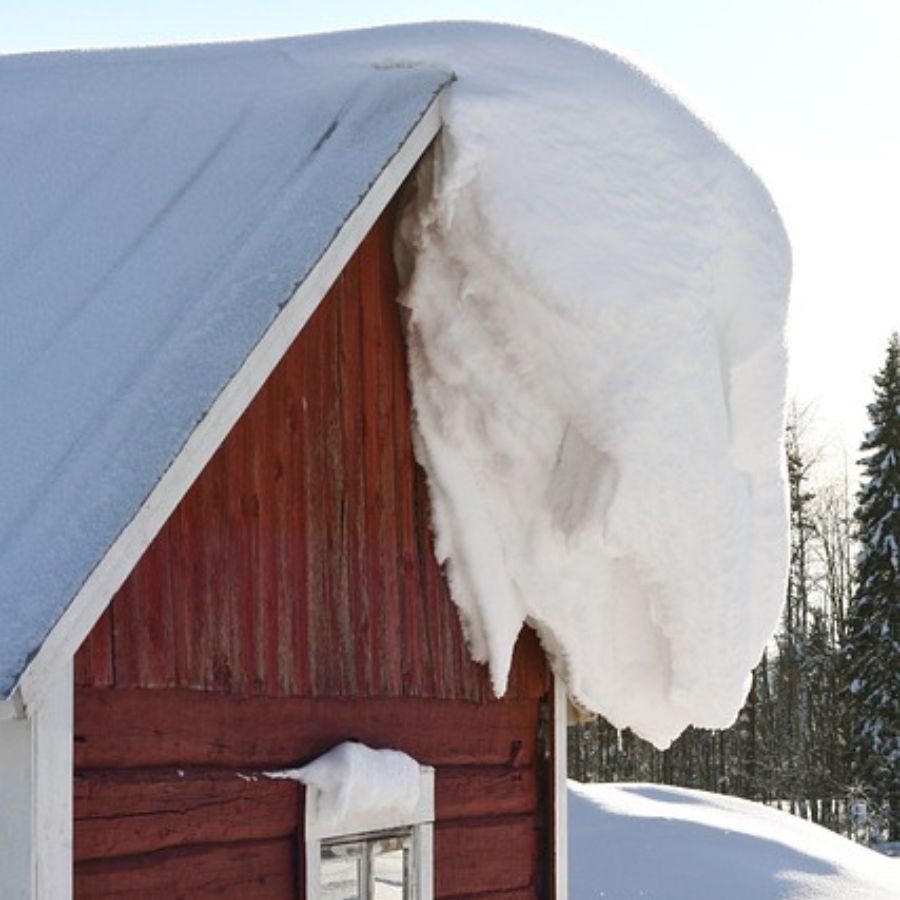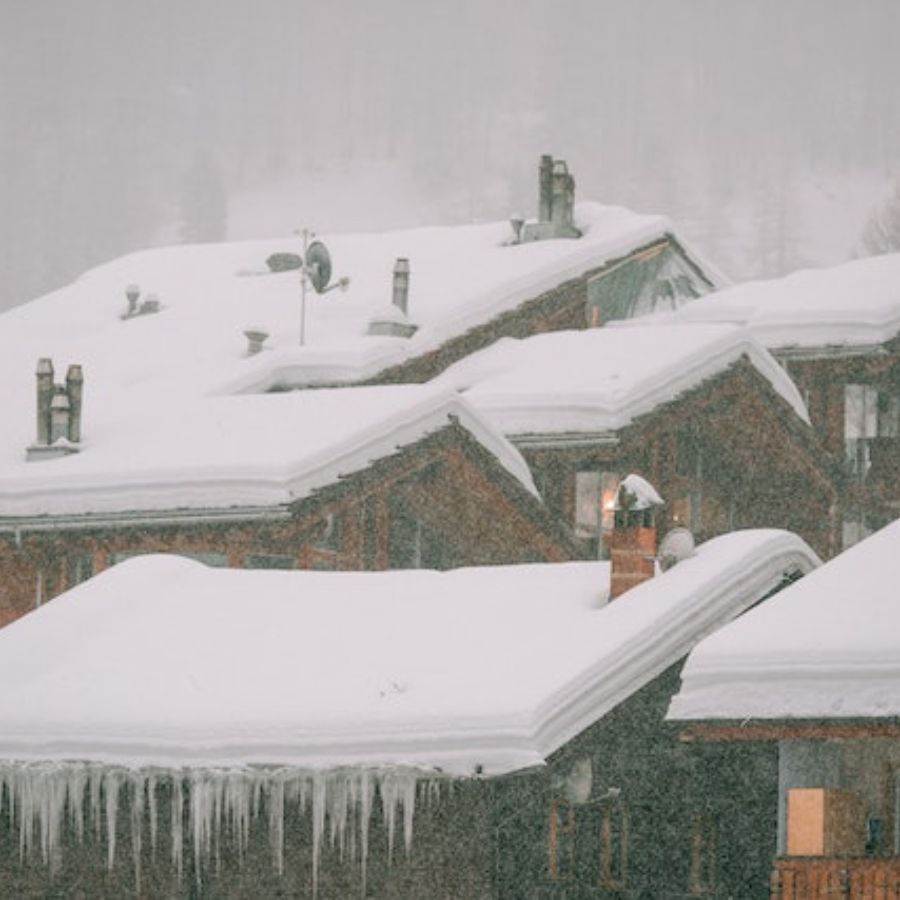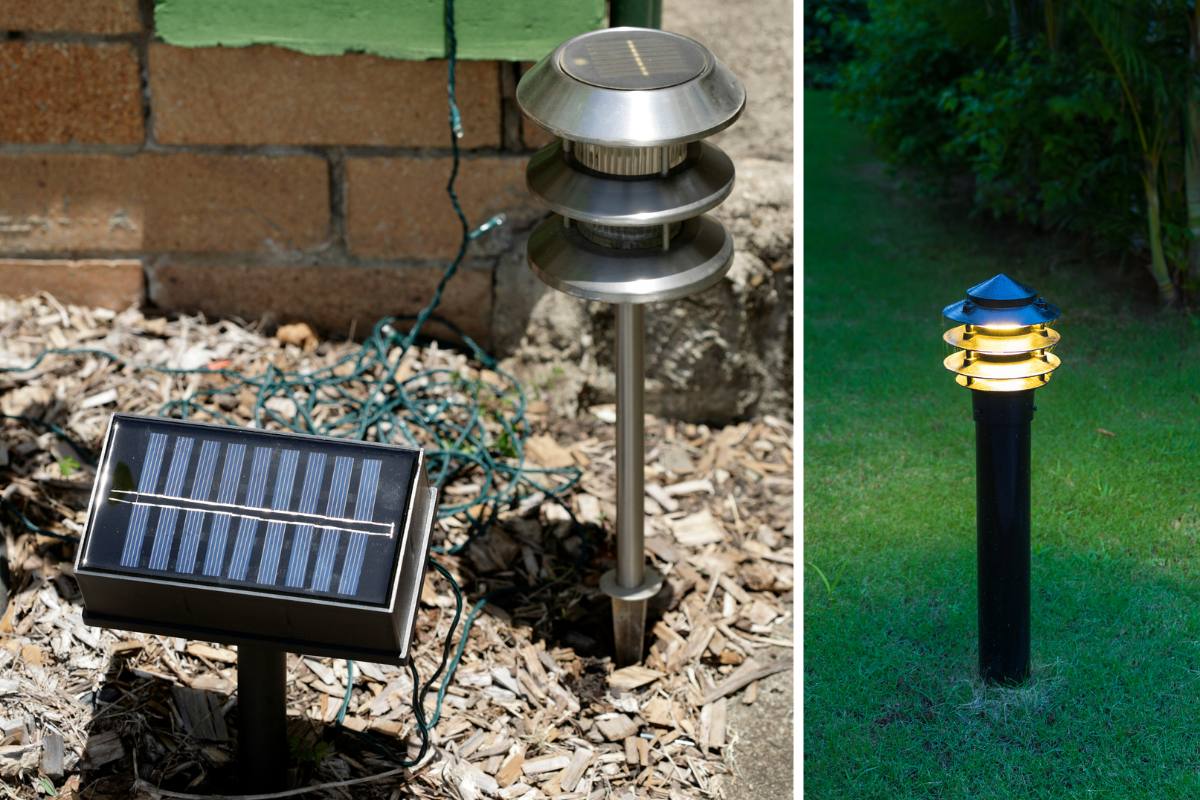Canada is one of the world’s coldest countries. Snowfall is a common occurrence during the winter months. While snow on the ground may be a picturesque sight, it poses a significant challenge for Canada’s solar industry. Snow can accumulate on solar panels, reducing their efficiency and energy output. This article will explore the effects of snow on solar panel systems in Canada. We will also discuss the best solutions to overcome them.
Challenges Posed by Snow on Solar Panels
Reduced Efficiency and Energy Output
Snow accumulation on solar panels can significantly reduce their efficiency and energy output. That hinders the overall solar power production of a solar power system. Snow cover can obstruct the sunlight from reaching the solar cells, reducing their ability to generate electricity. Furthermore, the weight of the snow on the panels can cause physical damage like bending or cracking, further reducing the panels’ efficiency. It is crucial to address snow accumulation on solar panels, especially in areas with heavy snowfall, to ensure optimal solar power production.
Impact on Energy Production
The impact of snow on solar panel energy production depends on the snow cover, solar array orientation and tilt, and geographic location. A study by the University of British Columbia found that the annual energy loss of solar panels due to snow cover in Canada varies from 5% to 15%. The impact can be even more in regions like the Arctic. Snow accumulation influences its ability to perform, and it is crucial to address it for optimal solar array efficiency.
Difficulties in Snow Removal
Removing snow from solar panels can be a challenging and risky task. It potentially affects solar panel efficiency and power generation. Conventional snow removal methods like shoveling or brushing may cause physical damage to the panels. In addition, the use of chemicals to melt snow can harm the environment and damage the panels. Snow accumulation can impede the ability of solar panels to perform and generate power. Therefore, it is crucial to address the issue of snow removal safely and effectively.
Solutions Being Developed to Overcome the Challenges
Tilted Panels
One effective solution to tackle snow on solar panels is to install them at a steeper tilt angle. It enables snow to slide off easily, decreasing the need for manual snow removal. Moreover, it increases the sunlight that reaches the solar cells. It enhances their performance and generates power at peak efficiency. This method helps maintain the ability of solar panels to perform well, even in snowy conditions, and ensures optimal power generation.
Heating Systems
Another solution by solar installers is to incorporate heating systems into solar panels. These systems can melt snow and ice, reducing the need for physical snow removal. However, using heating systems can increase the cost of solar panel installation and reduce their overall efficiency.
Snow Removal
Physical snow removal is still a perfect method for addressing the challenge of snow on solar panels. Solar installers are developing specialized tools and equipment to safely and effectively remove snow from solar panels. For example, some solar installers use soft-bristled brushes or air blowers to do away with snow without causing physical damage.
Artificial Intelligence
Researchers at the University of Waterloo have developed an AI-powered system that can predict the impact of snow on solar panel energy production. The system uses weather forecasts data and solar panel sensors to accurately predict the energy lost due to snow cover. Fortunately, solar panel owners can use this information to plan for snow removal or adjust their energy production expectations.
Anti-icing Coatings
Another solution the researchers are exploring is using materials with anti-icing properties to prevent snow buildup on the panels. Treating solar panels with special coatings may prevent snow and ice from sticking in the first place, reducing the need for physical snow removal.
Government Support for Solar Energy in Canada

We cannot ignore the potential benefits of solar energy in Canada despite the challenges posed by snow on the panels. Solar power is a clean and renewable energy source that can help to reduce greenhouse gas emissions and combat climate change. In addition, solar energy can help to reduce reliance on fossil fuels and provide energy security for Canadians.
To support the growth of solar energy in Canada, the federal and provincial governments have implemented various programs and initiatives. For example, the federal government has committed to achieving net-zero emissions by 2050 and has set a target of 40% of Canada’s electricity coming from renewable sources by 2030. In addition, the federal government has launched programs such as the Canada Greener Homes Grant, which provides financial assistance to Canadians to make their homes more energy-efficient, including solar panel installation.
Provincial governments have also launched initiatives to support the growth of solar energy in their respective provinces. For example, the government in Ontario has launched the Green Ontario Fund, which provides financial incentives for homeowners and businesses to install solar panels and other energy-efficient technologies. In Quebec, the government has implemented a program to support the installation of solar panels on public buildings and has provided financial assistance for developing solar energy projects.
Conclusion
Snow on solar panels in Canada poses a significant challenge for the country’s solar industry. Its accumulation on panels can reduce their efficiency and energy output, and snow removal can be a difficult and potentially dangerous task. However, solar installers and researchers are developing several solutions to overcome these challenges. They include the installation of tilted panels, the use of heating systems, and the development of specialized tools for snow removal. The federal and provincial governments are also supporting the growth of solar energy in Canada through programs and initiatives that aim to increase the adoption of renewable energy sources.
Despite the challenges posed by snow on solar panels, we cannot ignore the potential benefits of solar energy in Canada. Solar power is a clean and renewable energy source that can help to reduce greenhouse gas emissions and combat climate change. With continued support from governments and the development of innovative solutions by the solar industry, solar energy has the potential to play an increasingly important role in Canada’s energy mix.
Frequently Asked Questions
How Does Snow Affect Solar Panels in Canada?
Snow can significantly reduce the efficiency of solar panels in Canada by blocking the sun’s rays from reaching the panels. It can reduce the amount of energy the panels produce. In some cases, it causes the panels to stop working altogether. Snow accumulation on the panels can also increase their weight load, which can damage the panels or cause them to collapse if not well installed.
Do Solar Panels Work Properly in the Winter?
Yes, solar panels can work in the winter. While the amount of sunlight may be lower in the winter, solar panels can still generate electricity if they receive some sunlight. However, the accumulation of snow can reduce their efficiency and energy output, which can be a significant challenge for solar installations in Canada.
Can Snow Damage Solar Panels?
Solar panels perform well most of the time, that includes when they have snow. However, accumulated snow can damage them if the weight of the snow exceeds the panels’ weight load capacity. In addition, the repeated freeze-thaw cycles that occur during the winter months can cause cracks in the panels or damage to their frames. However, with proper installation and maintenance, solar panels can withstand the winter weather conditions in Canada.
How Can Snow Reduce the Efficiency of Solar Panels?
Snow can reduce the efficiency of solar panels in several ways:
- first, snow accumulation on the panels can block the sun’s rays from reaching the solar cells, reducing the energy the panels produce
- second, the weight of the snow can cause the panels to bend or even break if not well installed
- third, the accumulation of snow on the panels can cause them to become shaded, which can cause a mismatch in the electrical output of the panels


